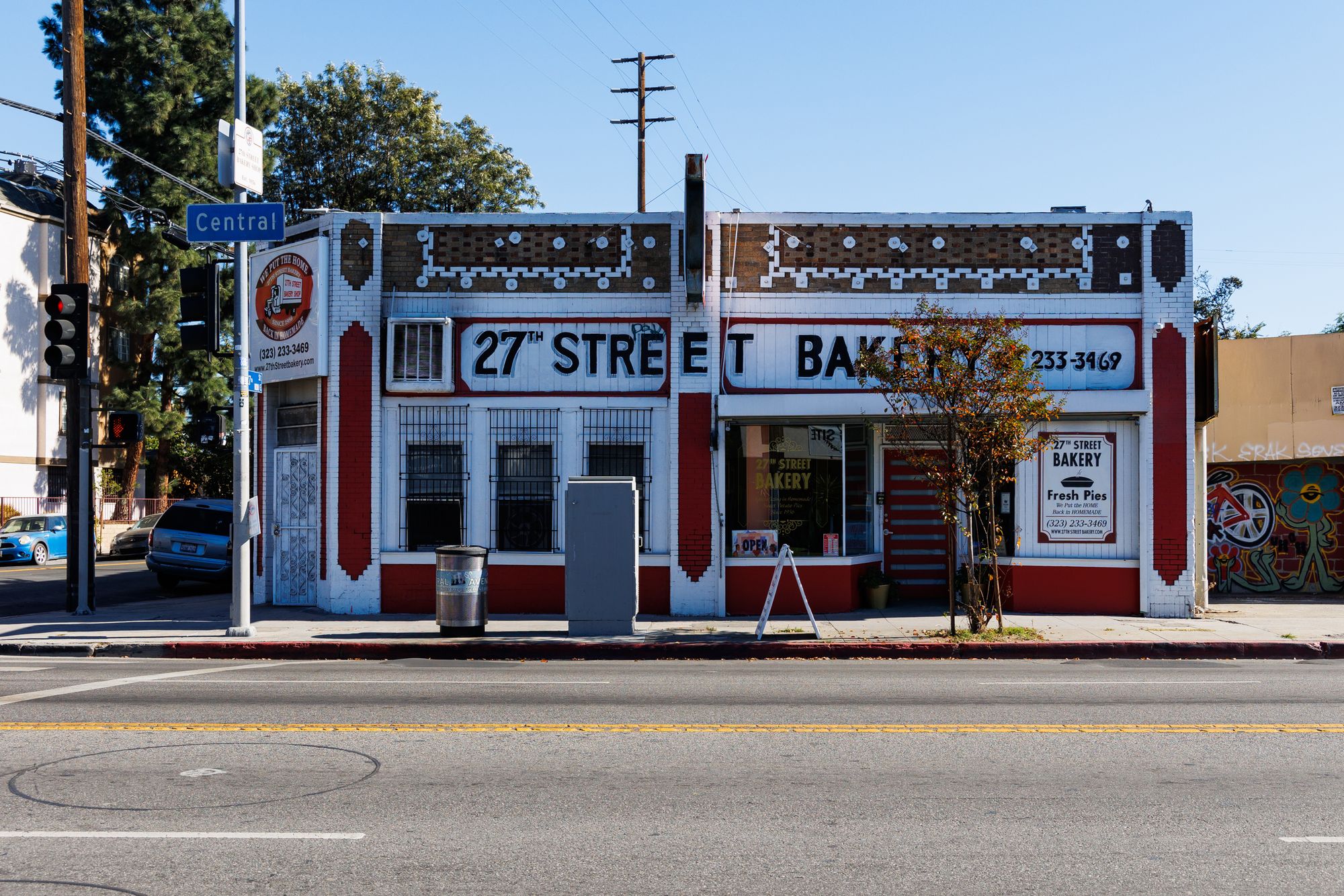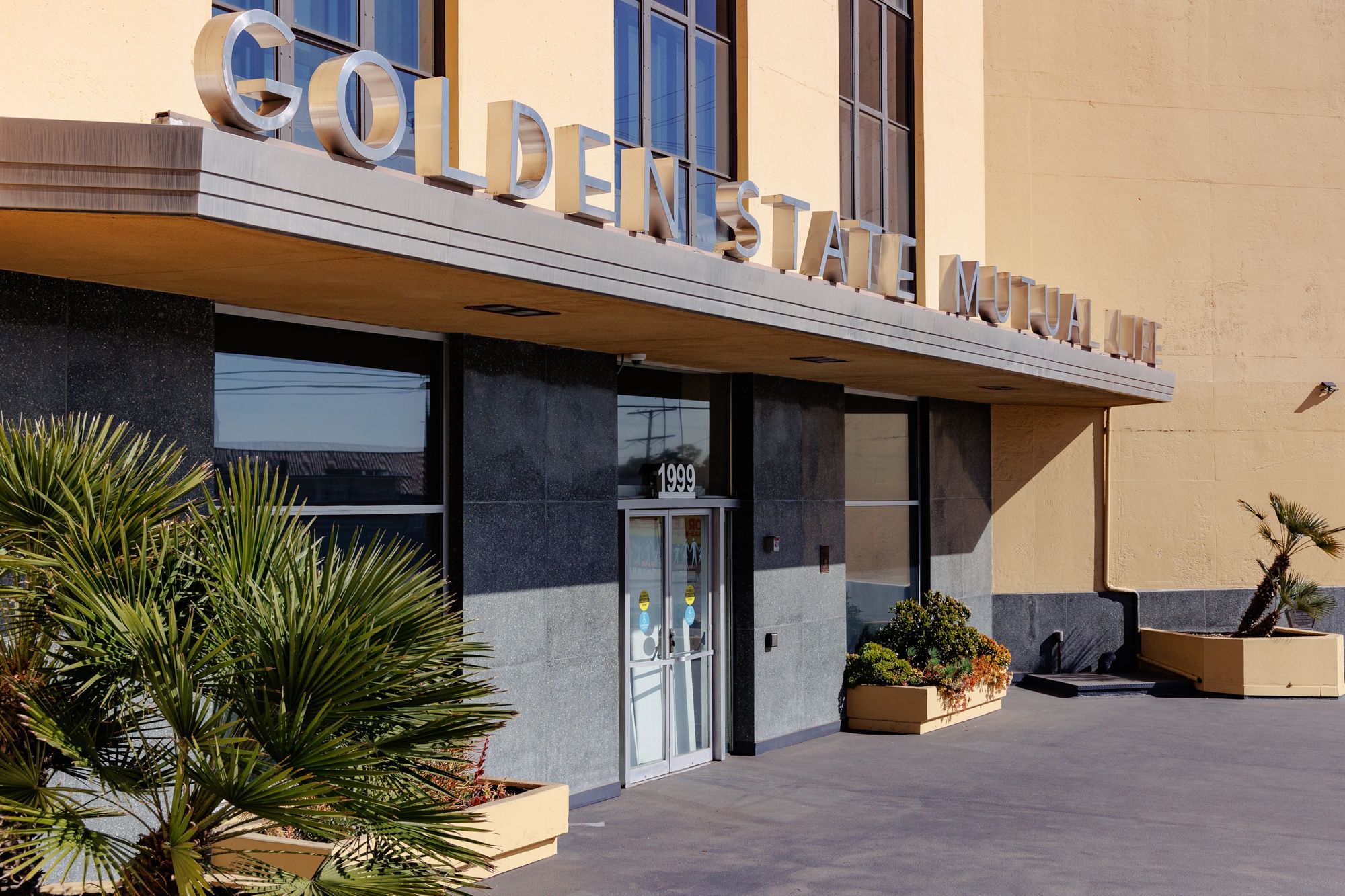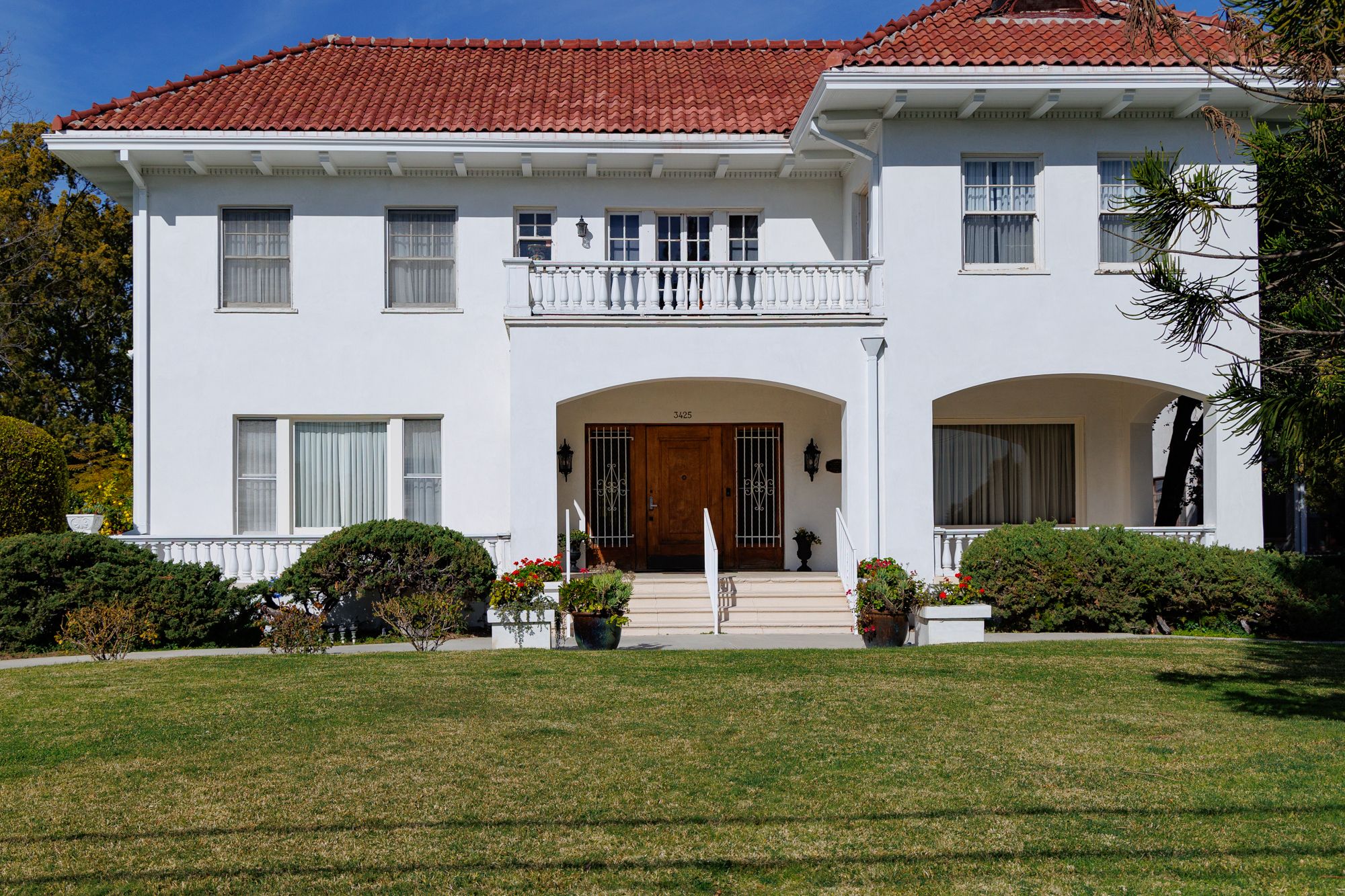Golden State Mutual
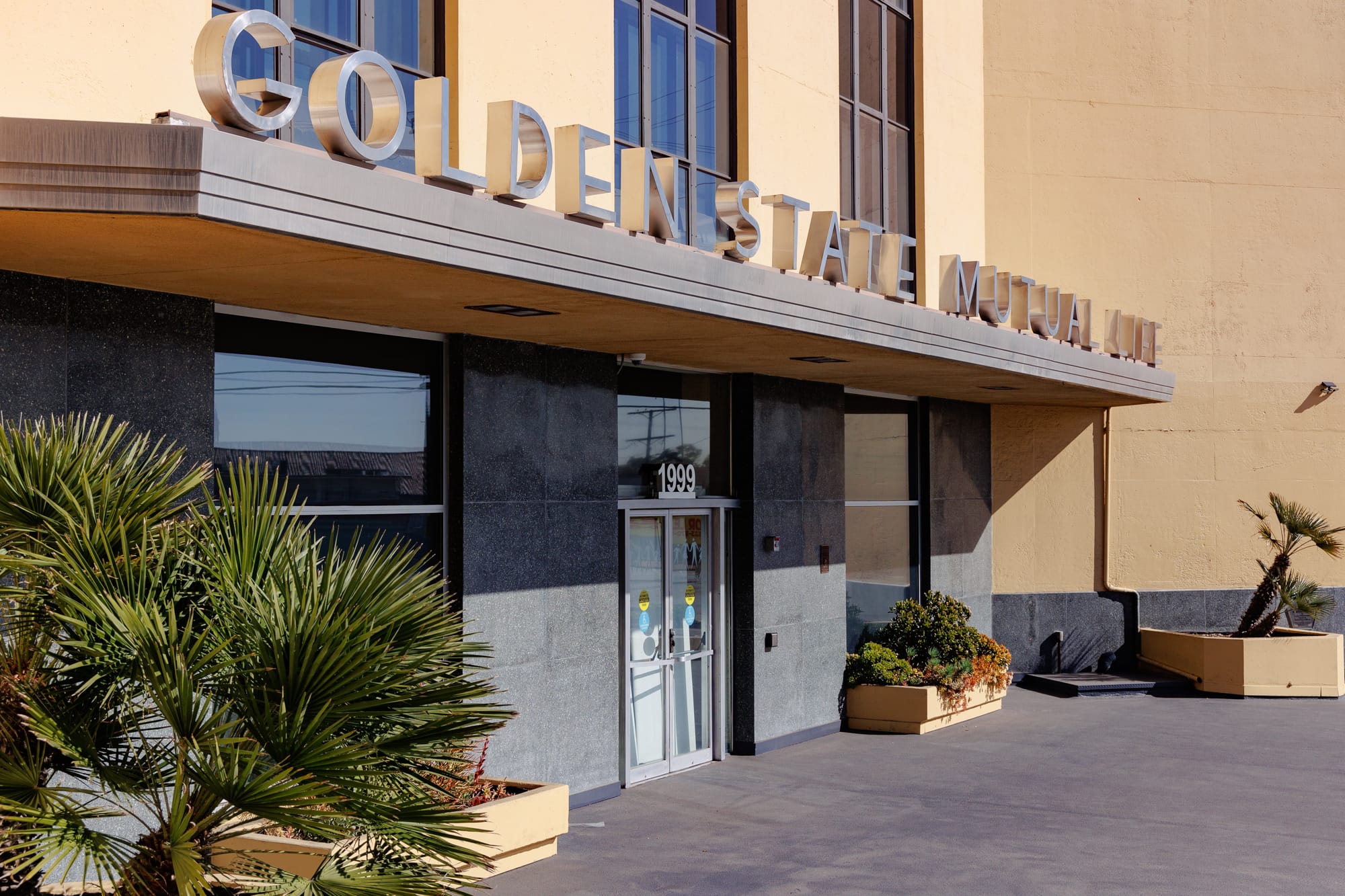
Text by Tyree Boyd-Pates | Photography by Kwasi Boyd-Bouldin
Formed in 1925 by William A. Nickerson, Norman O. Houston, and George O. Beavers, West Adam's Golden State Mutual Life (GSML) was the largest Black-owned company West of the Mississippi River. It was also of the area's most prominent buildings dedicated to Black upliftment in the American West.
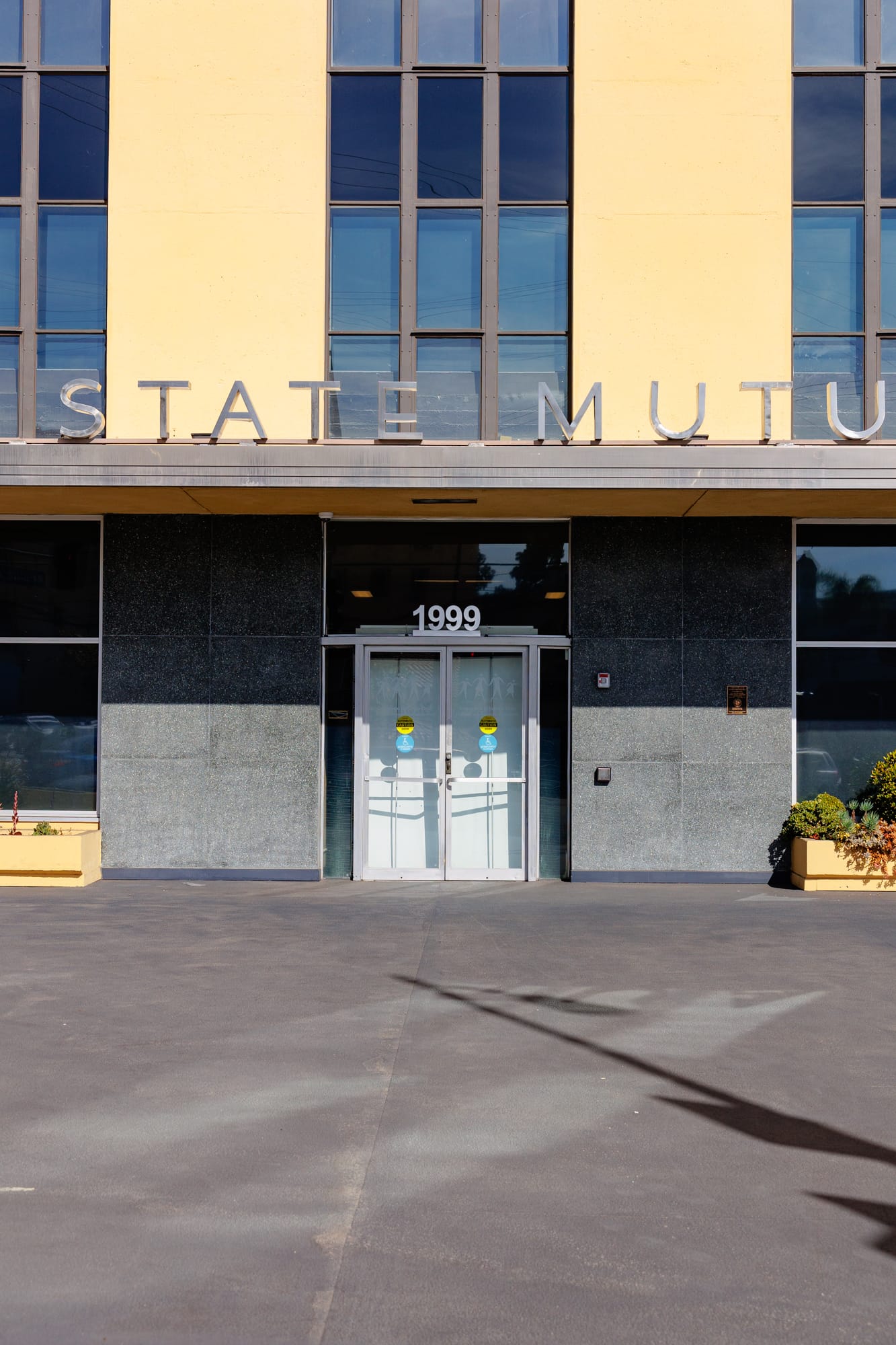
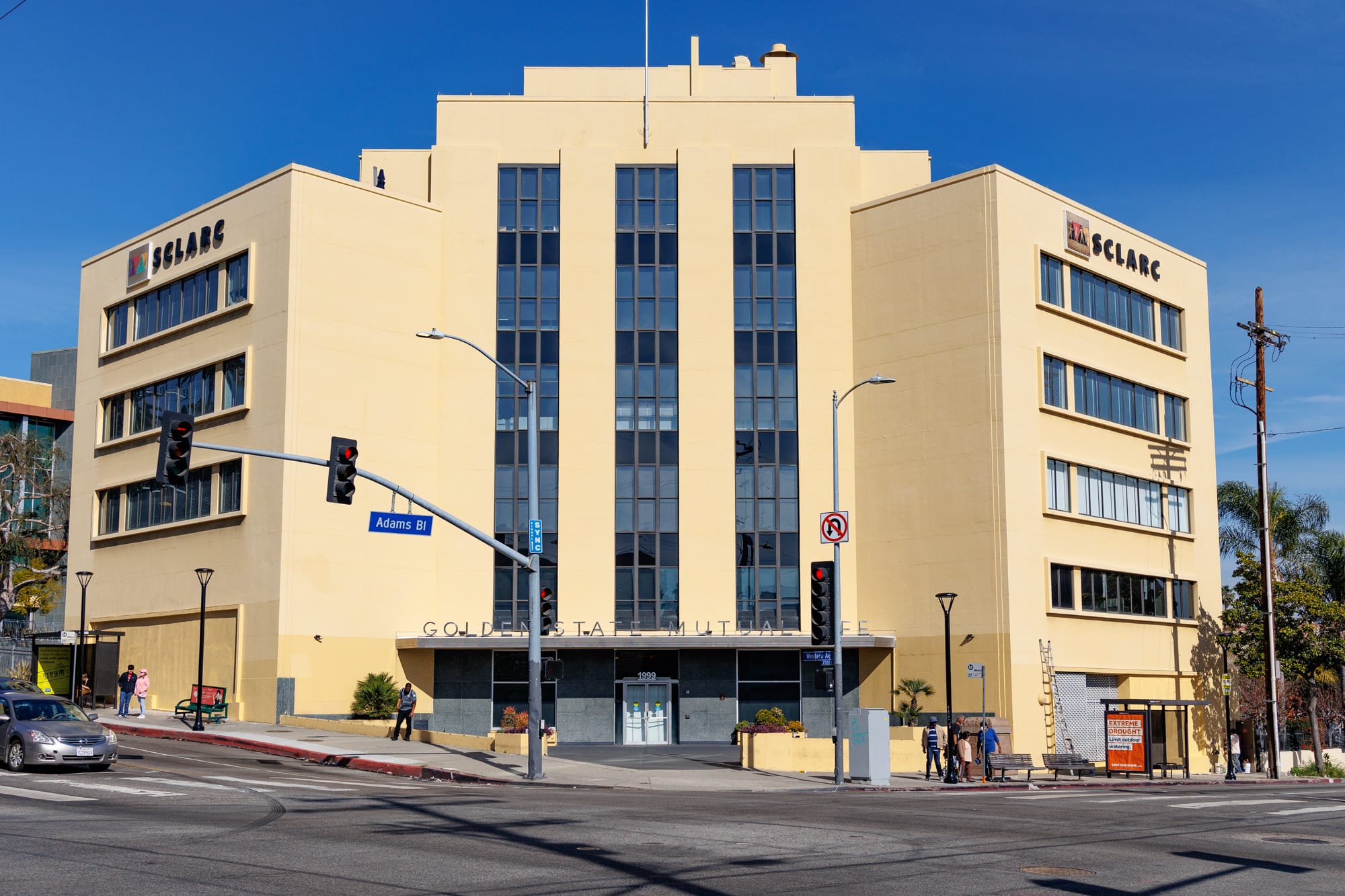
Conceptually, GSML originated from the need to assist in the insurance of the nearly 40,000 African Americans in California. Nickerson, Houston, and Beavers recognized the neglected opportunity. At the time, White insurance companies only insured African Americans were only done at outrageous rates; the three realized that if the other racist insurance companies didn't guarantee their people, they would have a business that would.
Opened in 1949, The GSML offices, located in 1999 W. Adams, were designed by Black architect Paul R. Williams. The building, modeled after Late Moderne styles, Paul Williams's attention to detail masterfully constructed throughout the 5-story tower.
Paul R. Williams, a native Angeleno, West Adams resident, and trailblazer, was the first Black member of American Institute of Architects whose portfolio -versed in Hollywood Hills homes and airports such as LAX. In the case of GSML, Williams felt a kinship to the causes espoused by the owners and felt compelled to be a part of them. And doing so, they commissioned two artists - Hale Woodruff and Charles Alston - to produce murals in the building that conveyed the African American contributions to the state of California.
After 14 months of construction, the building opened in August of 1949 to much fanfare from the Black community. Just within its first week, the building had toured 10,000 Black community members inside to see the start of the art building.
After the opening, the GSML continued to excel and flourish and even developed an extensive art collection byways of its curator, artist William Pajaud, who felt compelled to collect art by Black artists. And would amass an extensive collection of works by artists like Betye Saar, Elizabeth Catlett, Henry Ossawa Tanner, and Charles White.
By the 1980s, GSML found itself in a precarious financial position. As a result, the GSML sold most of its art collection to preserve it, but it has yet to be successful. Fortunately, the building became a landmark when it became a National Historical place in 2011. In 2015, significant renovations occurred to preserve the structure.
The GSML building still serves as a beacon and monument for Black upliftment. It represented gainful efforts toward financial stability for Black Angelenos during an especially evasive time. Recognizing it as a monument can inspire future Black Angelenos to find and use the same symbolic blueprints that Paul Williams and others made in the 1940s.
Sources:
“Golden State Mutual Life Insurance Building | Los Angeles Conservancy.” Www.laconservancy.org, www.laconservancy.org/locations/golden-state-mutual-life-insurance-building. Accessed 22 Jan. 2023.
Meares, Hadley. “Black Californians Were Denied Loans They Needed to Build Wealth. Black Insurance Agents Made It Possible.” Curbed LA, 18 Feb. 2020, la.curbed.com/2020/2/18/21138451/golden-state-mutual-life-insurance-building-los-angeles. Accessed 22 Jan. 2023.
“The Golden State Mutual Life Insurance Company.” Www.lapl.org, www.lapl.org/collections-resources/blogs/lapl/golden-state-mutual-life-insurance-company. Accessed 22 Jan. 2023.

